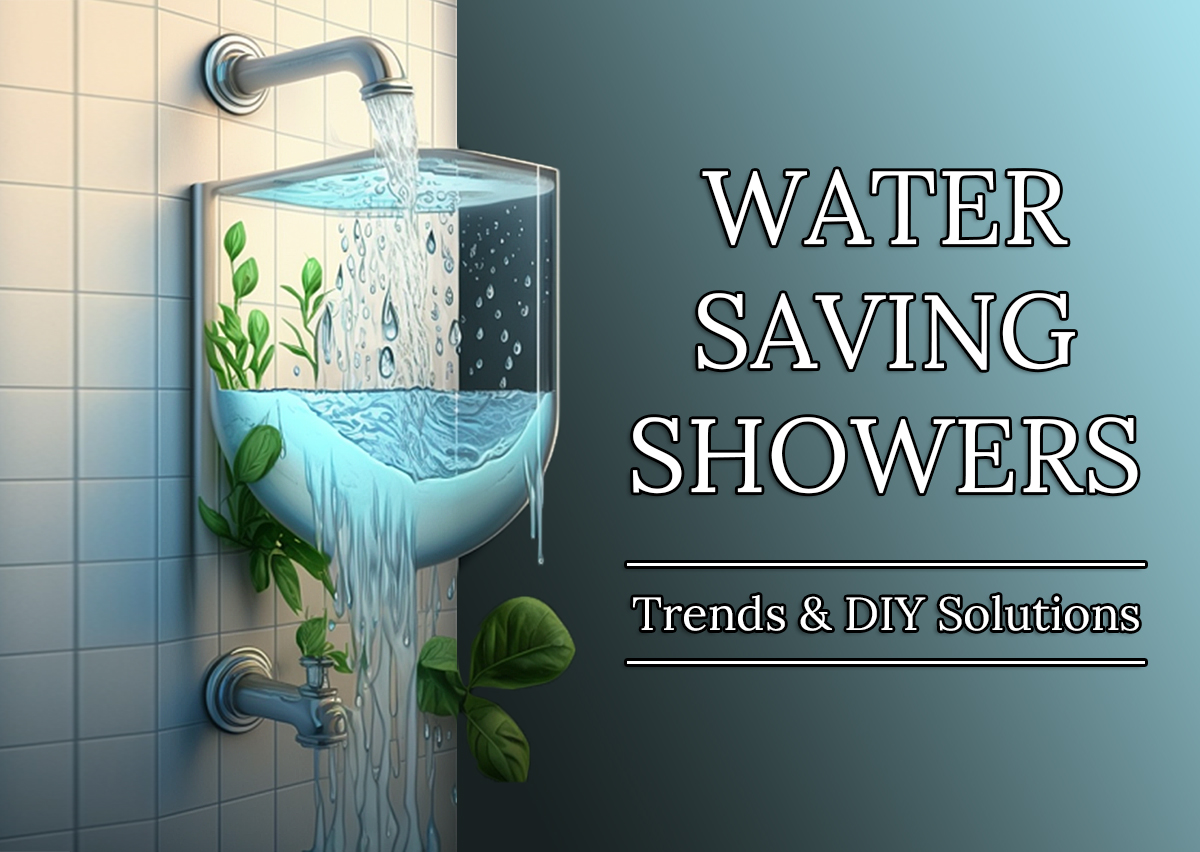
Shower systems might be the biggest contributor to water consumption in domestic settings. The habit of taking long showers might feel therapeutic and refreshing, but excessive water consumption can jack up your energy bills and increase freshwater wastage. However, water-saving shower systems could be the answer to this problem.
In a world where freshwater resources are gradually depleting, wasting water during long showering sessions feels morally wrong nowadays.
This is why for this World Water Day; we are going to talk about how you can save water while still enjoying showers.
This guide will cover the incoming eco-friendly showers in the Bathroom Industry and also offer some tips to help repurpose your old shower into an eco-friendly one.
Water Scarcity and the Importance of Saving Water
People use water not only for drinking and washing purposes but also in the farming and industrial sectors. Due to excessive urbanization and deforestation, less rainfall, and excessive wastage in households, many areas face a shortage of clean and hygienic water.
Current State of Water Scarcity
More than two-thirds of the world's population is experiencing water scarcity for months each year. According to a UNICEF report on water scarcity, almost half of the global population could face a shortage of water by 2025.
The shrinking water resources limit access to safe and clean water for drinking and hygienic purposes in homes, schools, and healthcare facilities. Less water can also result in sewage system failure, which could lead to disease outbreaks such as cholera.
The Importance of Water Conservation in Households
Water conservation reduces energy consumption and saves natural water resources from depleting quickly. Utilizing less water also allows other animals in the ecosystem to thrive, reducing the chances of drought.
Since energy is required to filter, heat, and pump water in a household which results in massive energy bills and a higher carbon footprint, conserving water can help you save money and the environment.
The Role of Showers in Water Consumption
Apart from kitchen use, most of the water consumed in a household is through showers and baths. According to EarthEasy, a 4-minute shower uses around 20 - 40 gallons of water.
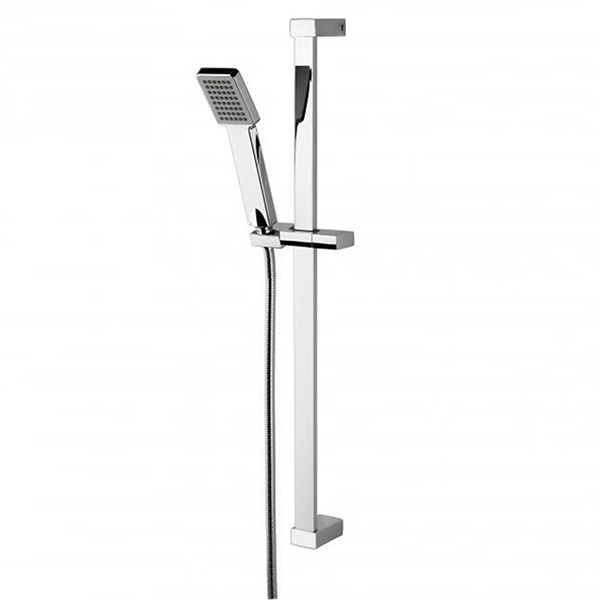

The Amount of Water Consumed by Showers:
According to the findings of Unilevers R&D department survey, a standard showerhead releases around 4 gallons of water per minute. Considering the average showering duration of 8 minutes in the UK, a citizen consumes around 32 gallons of water in a single shower session. If you have a big family, the high energy consumption for heating and pumping water will leave a higher carbon footprint.
How Water Consumption can be Reduced with Showers
Saving just 3 minutes from your typical showering session can save around 12 gallons of water every day. Multiply that by your family members to know how much water this small step will conserve.
Make sure to turn off the shower while applying soap or shampooing to make a difference. Many people use flow-restrictor showerheads that allow less water to flow out, allowing you to conserve more water each day.
The Latest Trends in Water Saving Showers
The Advantages of Water Saving Technology
As the awareness about water conservation becomes more widespread, people are taking necessary steps to reduce their water wastage. Shower flow controllers and smart valves are the two latest technologies used in eco-friendly showers.
According to the Energy Saving Trust, an average person in England and Wales uses 152 liters of water per day, and about half of that is from showering. So, switching to a water saving shower head can be a good first step when making more environmentally friendly changes. An average family of four can save up to 2700 gallons of water every year, significantly impacting environmental protection.
How Water-Saving Technology Works in Showers
Modern water-saving technology reduces the amount of water flowing through the showerhead without undermining the pressure you need for a wonderful showering experience. The water-saving technology is mainly found in the following shower gadgets:
1. Low Flow Showerheads
Unlike traditional shower heads that allow a minimum flow rate of 5 gallons per minute (gpm), low-flow showerheads only allow 2.5 gallons of water to flow through every minute. They use special water constriction mechanisms like laminar flow restrictors and aerators that diminish the water flow while keeping the pressure steady for a satisfying showering experience.
2. Smart Shower Systems
These shower systems have built-in innovative sensors and algorithms that automatically track and adjust the amount of water flowing through the showerhead at a particular time.
Moreover, these sensors can detect your movement inside the room and constrict or stop the water flow when you step away from the shower and relieve it when you are ready to shower. Some high-end shower systems also have in-built wi-fi and voice commands that allow you to personalize your shower experience while also saving water.
3. Water Recycling Systems
As the name suggests, water-recycling shower systems collect and filter the shower water down the drain, allowing you to reuse it for other bathroom purposes like toilet flushing. These systems can recycle up to 90% of the shower water, which makes them an ideal solution for water-scarce areas.
Adopting these advanced eco-friendly shower technologies into your routine can help you save water, reduce your ecological footprint, and minimize water bills without compromising comfort and convenience.
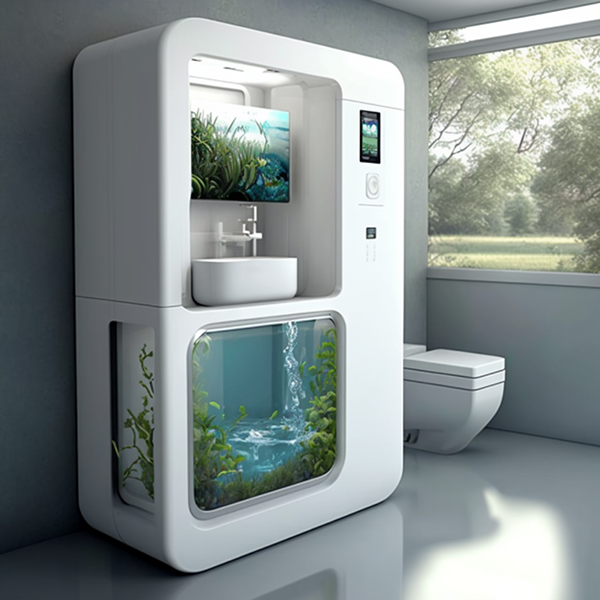

The Different Types of Water-Saving Showers
Water-saving showerheads exhibit a wide variety of styles, shapes, and designs catered to the bathroom's interior theme. Even though different mechanisms operate them, they help you reduce the overall water consumption of your bathroom without sacrificing the comfort and satisfaction of a showering experience. Some common types of water-saving shower heads include:
- Low-Flow Shower Head: These shower heads feature a small nozzle that restricts the flow of water that passes through. Some also allow air into the water stream that gives you an aerated showering experience while also reducing water consumption by up to 50%.
- Aerating Shower Head: These shower heads blow air into the water stream that creates a misty showering experience you'd otherwise get in high-end bathrooms. Since the water pressure stays the same, it doesn't make you feel you are using a lesser amount of water.
- Water-efficient Shower Head: Whether you're using a low-flow shower head or aerating shower head, you will automatically use less water than a traditional showering unit. These water-efficient shower heads can reduce water usage in your household by 20% compared to standard showers.
- Rain Shower Head: Unlike ordinary showers, these showerheads are designed to offer a rainy showering experience that is normally limited to luxury bathroom settings. They feature bigger showerheads that spread out the water to a larger area for a rainy sensation. But in reality, they consume less water than a typical shower unit.
- Dual Shower Head: This shower system uses a combination of a traditional shower head unit along with a handheld showerhead. The handheld shower offers you complete freedom over your showering habits without wasting excess water. They can be used separately or together, depending on your mood.
- Smart Shower Head: These showerheads are embedded with smart sensors that monitor the amount of water flowing through a showerhead and adjust the flow to the appropriate degree, reducing wastage. The interactive controls allow users to turn off the water supply when not in use. These shower heads help you reduce water consumption by more than 50%.
The Latest Innovations in Water-Saving Shower Technology
Advanced filtration is probably the most innovative water-saving technology used in showering systems. These showers use biological filtration to remove bacteria from the showered water and purify it while converting the oxidized energy into electricity. Whereas the rest of the water is treated with natural and self-cleaning filters making it ready for use.
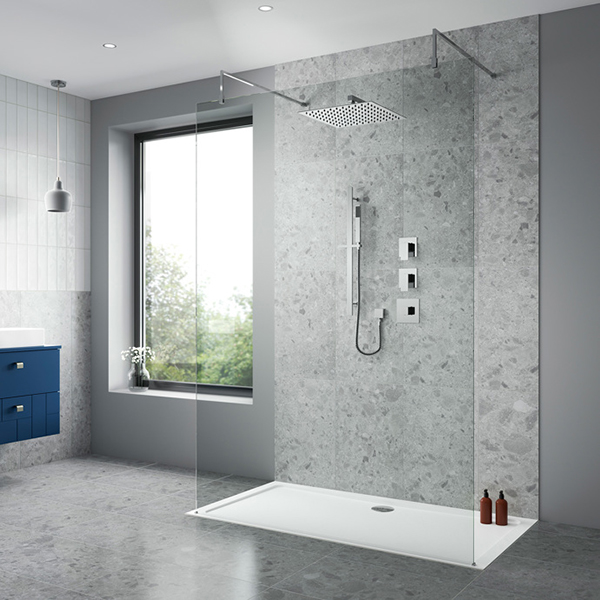

How to Choose a Water-Saving Showerhead
When buying a showerhead, ensure it has a decent water flow rate that helps you save water and money. Look for shower heads that allow a flow rate of fewer than 2.5 gallons per minute. This will help you save up to 40% water compared to a traditional shower.
Determine whether you want a low-flow shower head or a smart shower system depending on your preferred showering style.
Low-Flow Showerheads
These showerheads provide a minimum water flow rate, ideally less than 2.5 gallons per minute. But less water ejection does not mean insufficient pressure. In fact, showerheads with a low flow are cleverly designed to increase water pressure inside without increasing the water flow rate.
How Do Low Flow Showerheads Work
Low-flow shower heads feature two basic types - aerating and laminar. As the name suggests, aeration shower heads infuse air into the water stream which creates a misty effect once water is sprayed from the showerhead. Laminar-flow showerheads create individual water streams from the showerhead before it is ejected out.
Pros and Cons of Shower Heads with Low Flow
Pros:
- Have a 2 gpm flow rate, which reduces domestic water wastage.
- Low water ejection helps reduce electricity bills.
- Ensures a decreased carbon footprint that is beneficial for the environment.
Cons:
- Water is typically cooler in the showerhead with low flow.
- Takes time to adjust the temperature, which causes a time lag.
Smart Shower Systems
These eco-friendly shower systems offer completely optimized controls to monitor and adjust your water consumption during the shower. They have built-in technology sensors and buffers that allow users to track the water flow and adjust it to their preferences.
How Smart Shower Systems Work
Like a traditional mixer shower, smart shower systems are also connected to hot and cold water supply lines. When you operate the shower or set the desired temperature, it sends a message to the integrated thermostat inside - either wired or wirelessly.
Thanks to the embedded smart speakers, they give you complete autonomy over the shower system, allowing you to perform all functions through a touchpad, your smartphone, or voice commands.
Pros and Cons of Smart Shower Systems
Pros:
- Allows you to set a precise and consistent water temperature.
- In-built wi-fi offers a remote-control feature.
- Helps users operate the shower system through voice command.
- Automates showering routine to save time.
- Reduces overall water consumption of your household.
Cons:
- Internet-based controls are sometimes unreliable.
- You can't access the shower without electricity and internet availability.
How to Install Water-Saving Showerheads
Generally, water-saving shower heads are a simple and cost-effective solution to high energy bills and the carbon output of your household. We've shared a step-by-step guide to installing a showerhead.
Tools and Materials Needed
Before we get started, make sure you have the following tools and materials in your arsenal:
- Adjustable wrench
- Teflon tape
- Plumbers putty
- Screwdriver
- Water-saving showerhead
- Old rag
Step by Step Installation Guide
- Turn off your main water supply line through a shut-off valve that's usually located near the shower system, wash basin, or in the underground basement.
- Detach your existing showerhead by using an adjustable wrench in a clockwise movement.
- Clean the connecting spot of the shower arm with an old cloth to have a clear view.
- Wrap a thread or Teflon tape on the shower arm to ensure a strong connection.
- Before screwing your new showerhead on the arm, apply some plumber putty around the base to have a leak-free connection.
- Attach the new showerhead on top by turning it clockwise with an adjustable wrench.
- Relieve the water supply and observe the new showerhead for possible leaks. Tighten the connection if you see drops seeping out.
Tips for Maintenance and Care
Even if you install a premium-quality showerhead unit, it will start to decay without proper maintenance. Adopt the following maintenance and care tips to have an efficiently functioning showerhead:
- Showerheads can accumulate mineral deposits that flow with the water, causing a blockage. Try dipping the showerhead in vinegar solution for a thorough cleanup.
- Make sure your showerhead doesn't show any signs of leakage. A leaking shower will waste water and cause a hike in energy consumption.
- Consider replacing the showerhead every few years or at the first signs of deterioration. The mineral buildup over time will reduce its efficiency and cause leakage.
DIY Projects for Water-Saving Showers
The need for water-saving solutions in households is at an all-time high, and showers are the first step. Since high-end smart showers are expensive, you can take the do-it-yourself route to have your DIY water-saving shower system that helps conserve the environment and reduce energy bills.
How to Transform Your Current Showerhead into a Water-Saving Showerhead
Creating your water-saving eco-friendly shower can be easier than you might think. Simply follow our step-by-step guide on how to create your DIY eco-friendly showerhead.
Tools and Materials Needed:
- An old showerhead
- A flow restrictor
- Thread seal tape
- Pliers or a wrench
- Silicone sealant
Step by Step Guide:
- Screw out the old showerhead using the plier or a wrench.
- Detach the rubber gasket and replace it with the flow restrictor.
- Seal the shower arm with PTFE tape and screw the new water-saving shower head.
- Now tighten the shower head on the shower arm with the help of a plier.
- Finally, seal the shower head base with a silicone sealant to prevent leaks.
Tips for Designing a Water-Saving Shower System
A perfect water-saving shower system is all about finding the right balance between water conservation and a comfortable shower experience. Here are a few tips to help you with it.
- A low-flow shower head with a flow rate of 2.0 or fewer gallons of water per minute can help you reduce water consumption by up to 40%.
- Adding a thermostatic valve to your shower system can drastically reduce water waste as you don't need to constantly adjust the water mix to achieve desired temperature level.
- Consider installing a shower timer to limit the shower time to prevent unnecessary water waste.
- A shower head with an adjustable spray setting provides better control over water flow. Depending on your needs, you can save water by adjusting the shower from power, full body, and rain to mist spraying.
DIY Shower Water Filtration Systems
Tap water may contain chlorine and other harmful chemicals that may cause hair loss and other skin problems. A DIY shower water filtration system can be an affordable way to reduce this exposure. Carbon filters, like the one mentioned in the short DIY guide below, work by adsorbing chlorine and other contaminants, effectively improving water quality. Here we have provided a guide on how to create a DIY water filtration system:
Tools and Materials Needed:
- A showerhead with a removable filter
- A carbon filter cartridge
- Thread seal tape
- Pliers or Wrench
Step by Step Guide:
- Take out the showerhead from the shower arm with the help of pliers or a wrench.
- Detach the showerhead filter if you already have one.
- Fit the carbon filter cartridge into the showerhead. This will help in adsorbing chlorine and other contaminants, making the water safer for your skin and hair.
- Seal it with PTFE and screw on the shower head.
- Tighten the shower head onto the shower arm with the help of a plier or wrench.
Following the steps above, you can easily create your own DIY water-saving showerhead or DIY shower water filtration system. It will be one of the easiest ways to reduce utility bills and live more sustainably.
DIY Water-Saving Techniques
Shortening shower time
The average shower lasts about 8 minutes and during that time, a shower head disperses 10-12 liters of water every minute. Shortening your shower time by even a minute can save around 10% of water usage. While it may seem insignificant, the amount of water you save over a month or year can be quite substantial.
Fixing leaky faucets
Leaky faucets are the biggest source of water waste in the UK. It is estimated by DirectLine that around 460 million liters of water are lost every year through dripping taps. On average, Brits leave a leaky tap for 25 days before attending to it, which can increase the water bills by 6% with a drip per second.
- Get your required tools - Make sure you have a spanner, screwdriver, plier or wrench, and replacement valve or disc cartridge.
- Turn Off the Water Supply - Cut off the water supply from either the stopcock or isolation valve which is usually near the handle.
- Remove The Tap Handle - You will need to remove the tap handle by either lifting the cover or removing the screws.
- Unscrew Tap Mechanism - Turn the internal part anti-clockwise to unscrew it and get to tap water at the bottom.
- Replace The Ceramic Disc, Rubber Washer, or O-ring - If it requires a ceramic disc replacement, then take off the metal part to see the valve. Use a spanner to remove it from the tap. Simply fit in the replacement disc and tighten it. In case of rubber washer replacement, unscrew the rubber washer after removing the metal part and place the new one. The O-ring can also be replaced in the same way. You must unscrew the grub screw at the bottom and lift it off to access the O-ring.
Upgrade Your Shower by Replacing the Shower Valves
Replacing a shower valve is a relatively simple process that can be completed as a DIY. You will need the right tools and a basic understanding of plumbing.
You will need a new shower valve, screwdrivers, and a plier for a shower valve replacement.
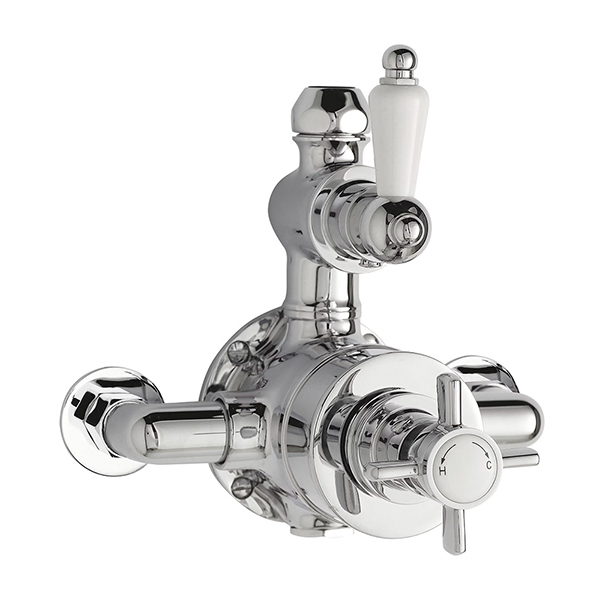

- Turn off the Water Supply - Turn off the water supply to the shower by shutting off the main water valve in your home.
- Access The Valve - Remove the shower handle and the removing plate to access the valve.
- Loosen and Remove the Valve - Use a wrench to loosen and remove the valve bonnet nut, which holds the valve in place.
- Remove Any Debris or Old Caulking - Pull the valve and clean its area around the valve opening to remove debris or old caulking.
- Install The New Valve - Install the new valve by sliding it into the opening and securing it with the bonnet nut.
- Fit the Trim Plate and Handle - Reinstall the trim plate and handle. Now you can turn the water supply back on and check for leaks.
Conclusion
You can significantly reduce water consumption by using modern water-saving shower technology without sacrificing the shower experience. With a wide range of eco-friendly shower options available, from low-flow showerheads to intelligent shower systems, integrating these technologies into your home can not only conserve water but also promote the preservation of our planet and its valuable resources. This could be your first step towards adopting an eco-friendly way of life.
